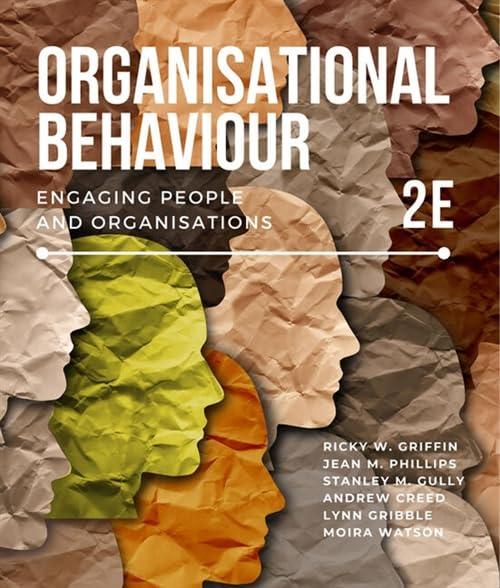Increased awareness of mental health at work, and a slowly diminishing stigma about admitting to feeling anxious,
Question:
Increased awareness of mental health at work, and a slowly diminishing stigma about admitting to feeling anxious, stressed or maybe prone to crying, are positive signs about cultural change. However, progress is slow because culture change is renowned for being glacial. Furthermore, while greater openness about mental health may be happening in Australian society, especially following the COVID-19 responses by governments and employers, workplaces are modern spin on a problem in personal relationships is the phenomenon of gaslighting, whereby the dominant, abusive person actively tries to convince the other of their mental frailties. It has been noted that gaslighting can also occur in workplaces and sometimes in a group context where mobbing of a person can happen through a strategically cc’d email, or by insidious use of social media to spread unfounded rumours. Questions about competence are the most common aspects of gaslighting in the workplace. Competence goes to the heart of one’s prospects for promotion and bonuses in pay, which, if denied, affects motivation and self-esteem. When progress is denied through gaslighting based on prejudices, the results can be very psychologically damaging. Research has also shown that crying in the workplace, while somewhat more common and accepted than it used to be, is still regarded as more prevalent among females. This gendered perception creates a management dilemma because it falsely represents the true nature of crying as a natural human response to emotions, which are essential indicators for a better understanding of the prevailing work culture. Some Australian women, and the Australian Human Rights Commission, have taken up the fight against gaslighting in the workplace.78 Gaslighting is a form of workplace bullying and intimidation that could be against the law. The Sex Discrimination Act 1984 prohibits direct and indirect discrimination, and fair work and safety regimes can also respond to repeated and unreasonable behaviour that creates a risk to a worker’s safety, which can cover mental safety. The difficulty is how subtle gaslighting can be. It can play into existing cultural discriminations, such as females being perceived as emotional, irrational and teary, while males are generally not perceived this way. These kinds of false perceptions are what need to be broken down.
Questions Mainstream
1. How do the ideas of conflict culture and culture of inclusion play a part in the way crying in the workplace is perceived in the Australian context?
2. In what ways could the three elements of managing organisation culture be best used by senior managers in Australian companies to minimise gaslighting in the workplace?
Critical
1. Since mental health issues are now more widely acknowledged in society, in what ways can you see organisations leveraging the right technologies for creating and maintaining a culture of trust, openness, relationship building and information sharing that might be able to help people through mental health crises?
2. Drawing on what you know about organisational culture, why do you think issues of gender are still causing discrimination in workplaces?
Step by Step Answer:

Organisational Behaviour Engaging People And Organisations
ISBN: 272389
2nd Edition
Authors: Ricky W. Griffin, Jean M. Phillips, Stanley M. Gully, Andrew Creed, Lynn Gribble, Moira Watson





